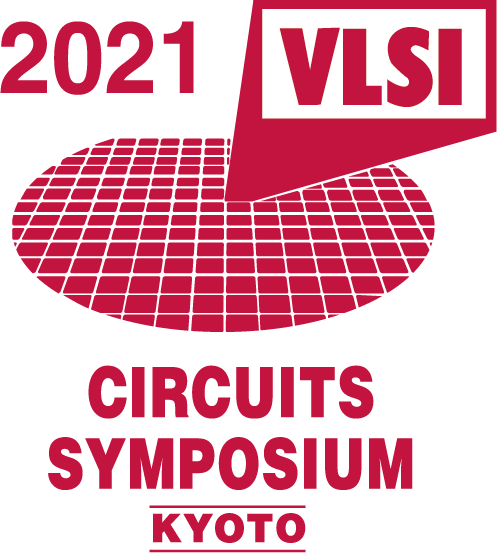Forum
Technologies for Post COVID-19 Era
Moderators: Chris Van Hoof (imec)
Live Session: June 19, 7:00AM-8:30AM (JST)
- The Growing Importance of Indoor Air Quality Monitoring: How CO2 Sensors Help to Reduce the Risk of COVID-19 Transmission, Laurent Beaurenaut, Infineon Technologies
-
Abstract:
Public awareness of the importance of good air quality has constantly increased over the years. This has become even more true during the Covid-19 pandemic, since a clear correlation could be established between indoor air quality and the risk of virus contamination via aerosols. CO2 concentration is a well-accepted indicator of indoor air quality. Photo-acoustic sensing technology enables the broad market introduction of a new generation of CO2 sensors which are reliable, affordable and easy to integrate. In the future, the deployment of multiple environmental sensors connected to the Cloud will be key to identify the constituents of indoor and outdoor air in order to achieve better air quality.
- Going from a 5G/6G Vision to Real Implementation, Fredrik Tillman, Ericsson Research
-
Abstract:
The first wave of 5G systems are currently being rolled out, both for low bands and at mm-Wave frequencies. For the latter, commercial analog phased-array antenna systems have been developed to enable adequate coverage. In coming generations these radio heads will enhance performance by including digital beamforming capabilities and target even higher levels of integration. At the same time, research activities addressing the post-5G era are gaining momentum and initial ideas on new use cases and system performance are surfacing at an accelerating pace. In this talk, current implementation strategies are discussed and an outlook given on what challenges the industry will face when taking on new frequency regions on the road towards 6G. This journey will not only include a race to sub-THz frequencies (+100GHz), but also a possible band exploitation below 5G mm-Wave bands to capitalize on existing deployment grids.
- Digital Annealer: Technology for Solving Combinatorial Optimization Problems in Real World, Jumpei Koyama, Fujitsu
-
Abstract:
Quantum annealing and classical annealing have been studied as approaches to solve social issues in an optimization framework. We developed the Digital Annealer, which is the dedicated hardware constructed from digital circuits. It solves problems up to an 8k-bit scale at high speed and has shown performance exceeding that of general-purpose solvers used in practical applications. The COVID-19 pandemic has made existing social problems more complex, so that the optimization framework is becoming more important. For example, in logistics, many complex constraints such as traffic restriction and crowd avoidance are imposed on the optimization of delivery planning. In drug discovery, searching for stable structures to develop a new drug effective for COVID-19 is a significant challenge. A hardware-software hybrid approach is essential to solving this large-scale and complex problem we are facing now. This presentation will discuss the hybrid technique and examples of its application to real problems.
- Challenges and Opportunities for Sub-7nm In-Memory/Near-Memory Computing, AI Accelerators and Hardware Security, Ram K. Krishnamurthy, Intel Labs
-
Abstract:
This presentation will highlight some of the emerging challenges and opportunities for sub-7nm in-memory/near-memory computing, machine learning accelerators, and hardware security technologies in the rapidly evolving AI and IoT industries. With Moore’s law process technology scaling well into the nano-scale regime, future SoC platforms ranging from high performance cloud servers to ultra-low-power edge devices will demand advanced AI capabilities and stronger security features. New and emerging IoT markets for autonomous vehicles, drones, and wearables require even higher performance and security at much lower cost while reducing energy consumption. Some of the prominent barriers to designing high performance and energy-efficient AI and security engines in multi-core microprocessors and SoCs will be outlined. New paradigm shifts necessary for implementing in-memory and near-memory compute functions and integrating special-purpose machine learning accelerators and hardware security processors into next-generation SoCs will be presented. Specific chip design examples and case studies supported by silicon measurements and trade-offs will be discussed.
- NTT DOCOMO's View on 5G Evolution and 6G, Takahiro Asai, NTT DOCOMO, Inc.
-
Abstract:
After the launch of 5G commercial service globally, study and development for technologies toward the evolution of 5G are ongoing, and furthermore, research on 6G has been already initiated in the world. NTT DOCOMO published the white paper on “5G evolution and 6G” in January, 2020 and updated in July, 2020 and February, 2021. In this presentation, contents of the white paper and our latest study results on “5G evolution and 6G” will be shown.
- Data Analytics Approach for Smart Manufacturing and Optimizing Equipment Condition, Tsuyoshi Moriya, Tokyo Electron Ltd
-
Abstract:
In semiconductor manufacturing, a wide variety of tuning knobs control the processes. Optimization of these processes becomes a serious problem due to the associated complexity of their nature as well as the correlation between each tuning parameter. machine learning has recently drawn the attention of engineers due to its promising characteristics as a powerful tool for the optimization of these parameters. machine learning technique applied in this study is based on a regression algorithm for optimization, particularly of the deposition process condition and the plasma distribution control knob, the latter being related to the uniformity of film thickness and etch rate within a wafer, which are important properties in semiconductor manufacturing. The machine learning approach is useful because it allows the exploration of a new process window.
- Leveraging Semiconductor Technologies for Next-Generation Healthcare Tools, Peter Peumans, imec
-
Abstract:
Semiconductor technologies have advanced chiefly because of our exponentially increasing needs for computation, data storage and data communication. These powerful technologies can be leveraged in a myriad of ways to enable novel healthcare applications. I will discuss repurposing of devices at the nanoscale for high-throughput omics applications, a chip-based programmable organ-on-chip approach, and a novel SARS-CoV-2 diagnostics approach that detects the virus in exhaled particles using a simple breath test. The relevance of these systems in a post-COVID world will be highlighted.

